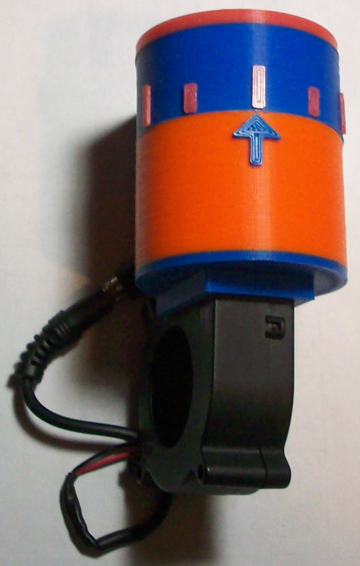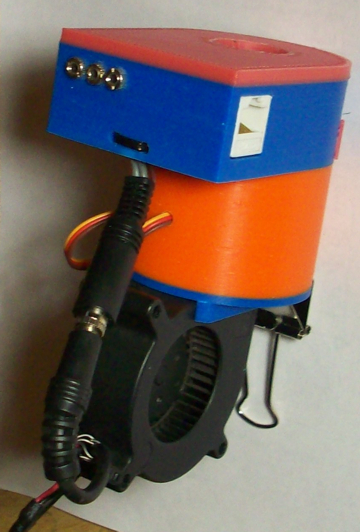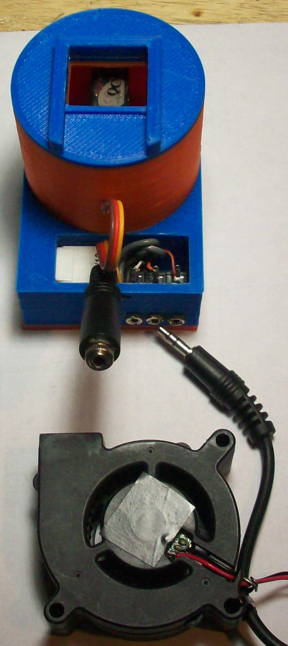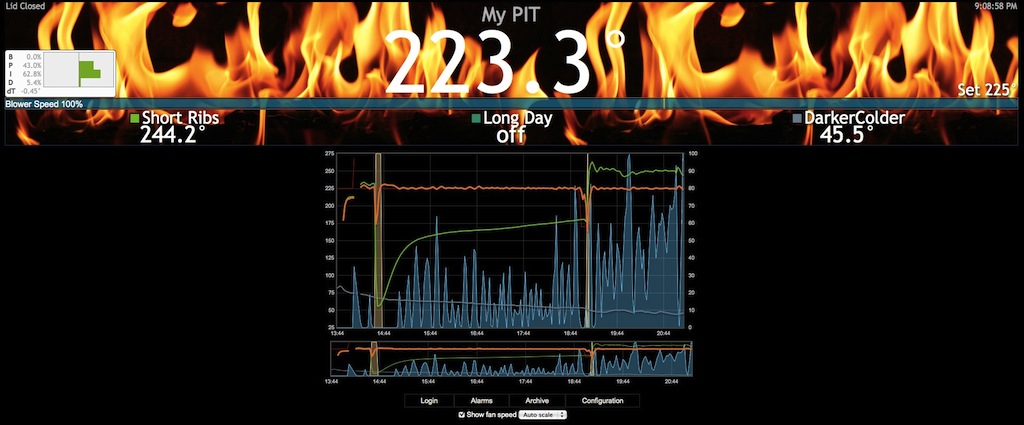OK, it took every scrap of filament I had laying around but I got a print of what I hope to be the final prototype of the "Roto-Damper" printed up and assembled last night. It's a funny multi-color unit but I think it looks kinda cool that way, at least I won't have trouble remembering which one is the prototype! Since I printed the parts onto Kapton tape the mating surface(s) are much more flat and smooth than the first valve, and I didn't need to print the parts with the rectangular base pad to keep them flat. This valve closes even tighter than the first valve, there is very little leakage even when quite a lot of air pressure is applied.
I have the three probe jacks integrated and working through the CAT5 cable now, it's really tight in the wiring cavity but everything fits, barely... I have tweaked the opening for the CAT5 jack a little bit to make the fit just right and reinforce that corner a bit as well. Finally, I added a mount for the blower that I think worked out really nice. I had thought of using a screw to hold the blower in place, but to do that I would need to either extend an arm out beyond the radius of the cirlce or all the way up to the screw hole on the top of the fan, which would just about double the size of the print. I ended up settling on a press-n-fit design that holds the fan really well, beauty is you just press the fan in there and you are good to go! I've put the fan in and out of the prototype a dozen times and it still holds firm like the first time, and I have plugged/unplugged the CAT5 jack dozens of times to test for durability, everything remains solid after putting it through those paces...
Here's a pic of the latest prototype valve:
Just to give you an idea of the scale, the valve measures 3 inches from top to bottom, not including the blower.
Here's a pic of the back of the valve showing the CAT5 and 3 probe jacks:
Here's a pic of the bottom without the fan installed, and you can see the inside of the wiring cavity:
I've got a wide roll of Kapton tape on order (along with more filament) so early next week I will print it out again in a solid color and will be updating the initial post in this thread at that time to reflect these developments, hopefully including a better video to showcase the "Roto-Damper" in action...
...looking back over this post I get to thinking I should have ordered some red and white filament along with the blue, cause I can see a "US Patriot" model of Red, White & Blue looking really slick. Although I made this one muti-color only because I didn't have enough of one filament to print a complete part, as it turns out a multi-color unit looks pretty slick....




